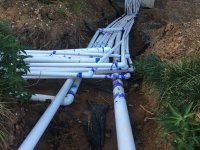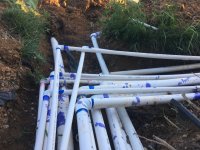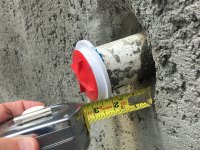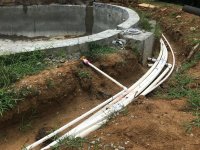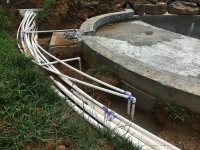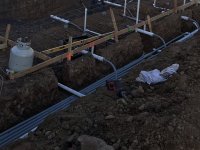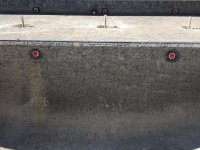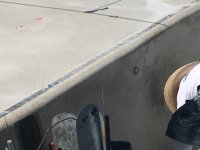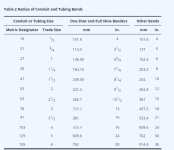In another thread I asked about the pool plumbing spaghetti that was done for my pool. I'm now wanting to focus a question on the conduit used for the lights. All 5 lights are Pentair GloBrites (3 pool lights, two bubbler lights). Attached you'll see pictures of the plumbing showing the use of schedule 40 pipe for the pool light conduit as well as them having several short 90 degree bend fittings. Additionally, you'll see the niche sticking out of the gunite which I thought should be cut flush to the gunite per the GloBrite installation manual. These niches have the light installed in them already with wire emerging at the (future) equipment pad.
I have watched some videos and seen on here that this could have several problems.
1) Pulling wire will be almost impossible making the GloBrites extremely difficult to service. Is pulling wire going to be impossible or near impossible? If I can't pull wire, how would the lights ever be serviced? wire splicing seems like an incredibly bad idea. Should the plumber have used actual electrical conduit and done heat bending like I have seen in several pics/videos?
2) Should these 2" PVC niches have been cut flush to the gunite pool shell already? Or is that something the plaster guys would typically do? Is this even possible with the light already being installed in the niche?
As I mentioned in the other thread, concrete prep work including filling/backfilling these trenches is starting next week and I don't know if I should halt everything and have this redone (PB already thinks it is fine, so it may be a fight to do so) or if I'm stuck with it.
I have watched some videos and seen on here that this could have several problems.
1) Pulling wire will be almost impossible making the GloBrites extremely difficult to service. Is pulling wire going to be impossible or near impossible? If I can't pull wire, how would the lights ever be serviced? wire splicing seems like an incredibly bad idea. Should the plumber have used actual electrical conduit and done heat bending like I have seen in several pics/videos?
2) Should these 2" PVC niches have been cut flush to the gunite pool shell already? Or is that something the plaster guys would typically do? Is this even possible with the light already being installed in the niche?
As I mentioned in the other thread, concrete prep work including filling/backfilling these trenches is starting next week and I don't know if I should halt everything and have this redone (PB already thinks it is fine, so it may be a fight to do so) or if I'm stuck with it.


